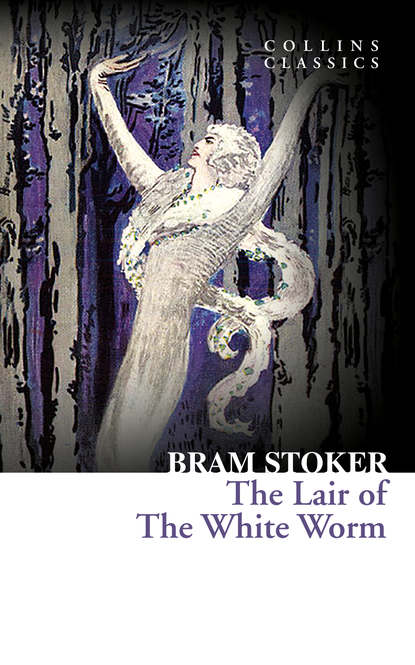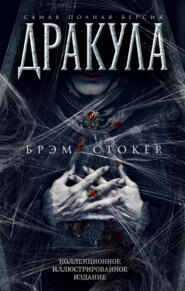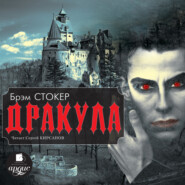По всем вопросам обращайтесь на: info@litportal.ru
(©) 2003-2024.
✖
The Lair of the White Worm
Автор
Год написания книги
2019
Настройки чтения
Размер шрифта
Высота строк
Поля
The Lair of the White Worm
Bram Stoker
HarperCollins is proud to present its incredible range of best-loved, essential classics.‘But it was not only the heart-rending sound that almost paralysed poor Mimi with terror. What she saw was sufficient to fill her with evil dreams for the remainder of her life…’At the estate of Castra Regis in Derbyshire, mystery lurks in the woods, a place where snakes dwell and murderous deeds take place in the darkness. The behaviour of local residents Arabella March and Edgar Caswall further arouse the suspicions of Adam Salton, recently arrived at the invite of his great-uncle. Determined to quell the supernatural malevolence in his midst, Adam embarks on a quest to uncover evil and restore harmony.The final novel from the author of ‘Dracula’, ‘The Lair of the White Worm’ is a lesser-known but well-loved classic from the master of gothic horror.
THE LAIR OF THE WHITE WORM
Bram Stoker
Copyright (#ub073a119-334f-5117-98e7-0e9cdfe3fc15)
William Collins
An imprint of HarperCollinsPublishers
1 London Bridge Street
London SE1 9GF
WilliamCollinsBooks.com (http://www.WilliamCollinsBooks.com)
This eBook published by William Collins in 2015
Life & Times section © HarperCollinsPublishers Ltd
Gerard Cheshire asserts his moral right as author of the Life & Times section
Classic Literature: Words and Phrases adapted from
Collins English Dictionary
Cover by e-Digital Design. Cover image: 1911 1
edition illustration by Pamela Colman Smith, courtesy Wikicommons
A catalogue record for this book is available from the British Library.
All rights reserved under International and Pan-American Copyright Conventions. By payment of the required fees, you have been granted the non-exclusive, non-transferable right to access and read the text of this e-book on-screen. No part of this text may be reproduced, transmitted, down-loaded, decompiled, reverse engineered, or stored in or introduced into any information storage and retrieval system, in any form or by any means, whether electronic or mechanical, now known or hereinafter invented, without the express written permission of HarperCollins.
Source ISBN: 9780008110505
Ebook Edition © January 2015 ISBN: 9780008110512
Version: 2014-12-18
History of Collins (#ub073a119-334f-5117-98e7-0e9cdfe3fc15)
In 1819, millworker William Collins from Glasgow, Scotland, set up a company for printing and publishing pamphlets, sermons, hymn books, and prayer books. That company was Collins and was to mark the birth of HarperCollins Publishers as we know it today. The long tradition of Collins dictionary publishing can be traced back to the first dictionary William published in 1824, Greek and English Lexicon. Indeed, from 1840 onwards, he began to produce illustrated dictionaries and even obtained a licence to print and publish the Bible.
Soon after, William published the first Collins novel, Ready Reckoner; however, it was the time of the Long Depression, where harvests were poor, prices were high, potato crops had failed, and violence was erupting in Europe. As a result, many factories across the country were forced to close down and William chose to retire in 1846, partly due to the hardships he was facing.
Aged 30, William’s son, William II, took over the business. A keen humanitarian with a warm heart and a generous spirit, William II was truly “Victorian” in his outlook. He introduced new, up-to-date steam presses and published affordable editions of Shakespeare’s works and ThePilgrim’s Progress, making them available to the masses for the first time. A new demand for educational books meant that success came with the publication of travel books, scientific books, encyclopedias, and dictionaries. This demand to be educated led to the later publication of atlases, and Collins also held the monopoly on scripture writing at the time.
In the 1860s Collins began to expand and diversify and the idea of “books for the millions” was developed. Affordable editions of classical literature were published, and in 1903 Collins introduced 10 titles in their Collins Handy Illustrated Pocket Novels. These proved so popular that a few years later this had increased to an output of 50 volumes, selling nearly half a million in their year of publication. In the same year, The Everyman’s Library was also instituted, with the idea of publishing an affordable library of the most important classical works, biographies, religious and philosophical treatments, plays, poems, travel, and adventure. This series eclipsed all competition at the time, and the introduction of paperback books in the 1950s helped to open that market and marked a high point in the industry.
HarperCollins is and has always been a champion of the classics, and the current Collins Classics series follows in this tradition – publishing classical literature that is affordable and available to all. Beautifully packaged, highly collectible, and intended to be reread and enjoyed at every opportunity.
Life & Times (#ub073a119-334f-5117-98e7-0e9cdfe3fc15)
The Lair of the White Worm
The Lair of the White Worm was published the year before Bram Stoker’s death, in 1911. Like Dracula the tale was loosely based on folklore, a fable from the north-east of England featuring a serpentine dragon named the Lambton Worm. There were many variations on the story; part of an oral tradition of storytelling, different narrators had adapted and embellished it over the centuries.
Stoker’s nightmarish monster lives in a lair and terrorizes the characters in the novel, and the plot is ultimately a classic tale of good versus evil. To reflect this theme the novel was also titled The Garden of Evil. Despite following the author’s success with Dracula, the novel was well-received and has since become something of a classic in the horror genre.
The original novel included a number of illustrations by Pamela Colman Smith, one of which is featured on the cover of this edition. She met Stoker in 1900 when both were involved with the Lyceum Theatre Group. He was the business manager and she the costume designer.
Dracula
When Stoker published his definitive story of Count Dracula the vampire, Mary Shelley’s Frankenstein had already been in print for 69 years and had enjoyed great success. It told a similarly satanic story of a Victor Frankenstein who fabricated a corpse, brought it to life using electricity and suffered the consequences of interfering with nature. Clearly the Victorian public had a taste for literature that served to chill and thrill, so Dracula had an interested and ready readership.
In the story of Dracula, an English businessman, named Jonathan Harker, visits Count Dracula in his Eastern European castle to organize his estate. He soon finds himself trapped by Dracula and is subjected to all manner of frightening and supernatural horrors, however he manages to escape, only to be followed back to England. Dracula arrives in the form of a satanic beast, who has fed on the blood of sailors whilst crossing from the continent. The crewless ship is wrecked and rescuers find only the captain’s account of supernatural events onboard his ship. There is also a cargo of Transylvanian soil, which Dracula has brought with him as a home from home.
Soon Dracula is stalking Harker’s fiancée Wilhelmina and her friend Lucy. When Lucy begins to fall ill her blood is drained and she appears to die. However, by night she is resurrected as a vampire, where she begins victimizing children. Professor Abraham Van Helsing recognizes that Lucy has become a vampire, so she is ritually killed. Dracula reacts by infecting Wilhelmina and controlling her mind through telepathy. Ultimately Dracula is pursued back to his castle, as the Professor knows that the only way to save Wilhelmina is to put an end to Dracula.
Stoker’s book is made real by the way it is written. It comprises various accounts narrated by different characters and includes excerpts from newspaper reports. The result is a story that has the illusion of truth. This style of writing is known as epistolary and was also used by Mary Shelley in writing Frankenstein. From an author’s point of view the technique means that a story can be told in such a way that the central characters do not need to witness everything themselves and the inclusion of newspaper excerpts means that events can happen without any of the characters having been their as witnesses. Inevitably this approach mimics the way things happen in real life so that scenarios (fictitious events) take on the quality of actual events. Readers are left wondering whether they are reading the imaginings of an author or reportage, thereby blurring the boundary between fiction and non-fiction. Needless to say, this enables the reader to readily suspend their disbelief and become wholly absorbed by the story.
It would be difficult to think of another novel that has influenced a genre quite so much as Dracula, except perhaps Frankenstein. Together they form the foundation upon which most subsequent horror stories rest. In many respects the vampire and the monster have now become caricatures of themselves, but a read of the original books make’s one realize just how dark and Gothic those characters were upon first inception.
Vampire Legend
There have been so many permutations of the Dracula and vampire theme in modern culture in print, television and film that it is easy to forget how it all started, with the publication of Dracula the novel in 1897. In truth, Bram Stoker did not invent the idea of the vampire by any means, but his story brought together the various myths and legends that were already in existence into a cohesive whole. Stoker’s tale of Count Dracula caught the imagination of a Victorian audience and continues to appeal to readers to this day.
Stories of vampires had trickled through to England from Eastern Europe for centuries before Stoker was inspired to write. European folklore included tales of vampires from the late mediaeval period and these became embellished and retold as popular fireside stories. Perhaps the earliest example of a real person being accused of vampiric traits was a Croatian named Jure Grando. It was claimed that he rose from death to feast on the blood of the living and had to be decapitated when a stake through the heart proved ineffective.
At that time, in the late 17th century, people were entirely open to notions of witchcraft and supernatural powers as science and empiricism had yet to come to the fore. Word of mouth, secondhand accounts and circumstantial evidence were taken as proof in a world where they served as likely explanations for things that people found frightening and disturbing. People were religious too, so they were entirely indoctrinated with the notion of heaven and hell, and good and evil. We can never know the truth of the Grando case, but it certainly caught the public imagination.
By the 18th century things were beginning to get out of hand. Many people, both dead and alive, were accused of vampirism and found themselves staked or beheaded whenever unexplained misfortune fell upon others in the community. In cultures where illnesses and diseases were not understood scientifically it was only natural to presume that someone had cast a spell on them or done something unspeakable to them. So it was that perfectly innocent neighbours became scapegoats and were slain as vampires or else had their corpses disinterred only to die a second time.
By the 19th century the subject of vampires had entered the realm of considered debate. Many scholars denounced the whole idea, pointing out that all reports of vampires were nothing more than fictitious stories based on anecdote and hearsay. Furthermore, there wasn’t a scrap of scientific evidence that it was possible for people to become ‘the undead’ and transform into vampires under cover of darkness. Nevertheless, many people persisted in their beliefs – especially in the more remote regions of Eastern Europe.
Dedication (#ub073a119-334f-5117-98e7-0e9cdfe3fc15)
To my friend Bertha Nicoll with affectionate esteem.
CONTENTS
Cover (#uf4041db2-4adf-5288-ac58-0ed6468baafd)
Title Page (#u5894bf13-5795-5614-922d-048ead6c21e7)
Bram Stoker
HarperCollins is proud to present its incredible range of best-loved, essential classics.‘But it was not only the heart-rending sound that almost paralysed poor Mimi with terror. What she saw was sufficient to fill her with evil dreams for the remainder of her life…’At the estate of Castra Regis in Derbyshire, mystery lurks in the woods, a place where snakes dwell and murderous deeds take place in the darkness. The behaviour of local residents Arabella March and Edgar Caswall further arouse the suspicions of Adam Salton, recently arrived at the invite of his great-uncle. Determined to quell the supernatural malevolence in his midst, Adam embarks on a quest to uncover evil and restore harmony.The final novel from the author of ‘Dracula’, ‘The Lair of the White Worm’ is a lesser-known but well-loved classic from the master of gothic horror.
THE LAIR OF THE WHITE WORM
Bram Stoker
Copyright (#ub073a119-334f-5117-98e7-0e9cdfe3fc15)
William Collins
An imprint of HarperCollinsPublishers
1 London Bridge Street
London SE1 9GF
WilliamCollinsBooks.com (http://www.WilliamCollinsBooks.com)
This eBook published by William Collins in 2015
Life & Times section © HarperCollinsPublishers Ltd
Gerard Cheshire asserts his moral right as author of the Life & Times section
Classic Literature: Words and Phrases adapted from
Collins English Dictionary
Cover by e-Digital Design. Cover image: 1911 1
edition illustration by Pamela Colman Smith, courtesy Wikicommons
A catalogue record for this book is available from the British Library.
All rights reserved under International and Pan-American Copyright Conventions. By payment of the required fees, you have been granted the non-exclusive, non-transferable right to access and read the text of this e-book on-screen. No part of this text may be reproduced, transmitted, down-loaded, decompiled, reverse engineered, or stored in or introduced into any information storage and retrieval system, in any form or by any means, whether electronic or mechanical, now known or hereinafter invented, without the express written permission of HarperCollins.
Source ISBN: 9780008110505
Ebook Edition © January 2015 ISBN: 9780008110512
Version: 2014-12-18
History of Collins (#ub073a119-334f-5117-98e7-0e9cdfe3fc15)
In 1819, millworker William Collins from Glasgow, Scotland, set up a company for printing and publishing pamphlets, sermons, hymn books, and prayer books. That company was Collins and was to mark the birth of HarperCollins Publishers as we know it today. The long tradition of Collins dictionary publishing can be traced back to the first dictionary William published in 1824, Greek and English Lexicon. Indeed, from 1840 onwards, he began to produce illustrated dictionaries and even obtained a licence to print and publish the Bible.
Soon after, William published the first Collins novel, Ready Reckoner; however, it was the time of the Long Depression, where harvests were poor, prices were high, potato crops had failed, and violence was erupting in Europe. As a result, many factories across the country were forced to close down and William chose to retire in 1846, partly due to the hardships he was facing.
Aged 30, William’s son, William II, took over the business. A keen humanitarian with a warm heart and a generous spirit, William II was truly “Victorian” in his outlook. He introduced new, up-to-date steam presses and published affordable editions of Shakespeare’s works and ThePilgrim’s Progress, making them available to the masses for the first time. A new demand for educational books meant that success came with the publication of travel books, scientific books, encyclopedias, and dictionaries. This demand to be educated led to the later publication of atlases, and Collins also held the monopoly on scripture writing at the time.
In the 1860s Collins began to expand and diversify and the idea of “books for the millions” was developed. Affordable editions of classical literature were published, and in 1903 Collins introduced 10 titles in their Collins Handy Illustrated Pocket Novels. These proved so popular that a few years later this had increased to an output of 50 volumes, selling nearly half a million in their year of publication. In the same year, The Everyman’s Library was also instituted, with the idea of publishing an affordable library of the most important classical works, biographies, religious and philosophical treatments, plays, poems, travel, and adventure. This series eclipsed all competition at the time, and the introduction of paperback books in the 1950s helped to open that market and marked a high point in the industry.
HarperCollins is and has always been a champion of the classics, and the current Collins Classics series follows in this tradition – publishing classical literature that is affordable and available to all. Beautifully packaged, highly collectible, and intended to be reread and enjoyed at every opportunity.
Life & Times (#ub073a119-334f-5117-98e7-0e9cdfe3fc15)
The Lair of the White Worm
The Lair of the White Worm was published the year before Bram Stoker’s death, in 1911. Like Dracula the tale was loosely based on folklore, a fable from the north-east of England featuring a serpentine dragon named the Lambton Worm. There were many variations on the story; part of an oral tradition of storytelling, different narrators had adapted and embellished it over the centuries.
Stoker’s nightmarish monster lives in a lair and terrorizes the characters in the novel, and the plot is ultimately a classic tale of good versus evil. To reflect this theme the novel was also titled The Garden of Evil. Despite following the author’s success with Dracula, the novel was well-received and has since become something of a classic in the horror genre.
The original novel included a number of illustrations by Pamela Colman Smith, one of which is featured on the cover of this edition. She met Stoker in 1900 when both were involved with the Lyceum Theatre Group. He was the business manager and she the costume designer.
Dracula
When Stoker published his definitive story of Count Dracula the vampire, Mary Shelley’s Frankenstein had already been in print for 69 years and had enjoyed great success. It told a similarly satanic story of a Victor Frankenstein who fabricated a corpse, brought it to life using electricity and suffered the consequences of interfering with nature. Clearly the Victorian public had a taste for literature that served to chill and thrill, so Dracula had an interested and ready readership.
In the story of Dracula, an English businessman, named Jonathan Harker, visits Count Dracula in his Eastern European castle to organize his estate. He soon finds himself trapped by Dracula and is subjected to all manner of frightening and supernatural horrors, however he manages to escape, only to be followed back to England. Dracula arrives in the form of a satanic beast, who has fed on the blood of sailors whilst crossing from the continent. The crewless ship is wrecked and rescuers find only the captain’s account of supernatural events onboard his ship. There is also a cargo of Transylvanian soil, which Dracula has brought with him as a home from home.
Soon Dracula is stalking Harker’s fiancée Wilhelmina and her friend Lucy. When Lucy begins to fall ill her blood is drained and she appears to die. However, by night she is resurrected as a vampire, where she begins victimizing children. Professor Abraham Van Helsing recognizes that Lucy has become a vampire, so she is ritually killed. Dracula reacts by infecting Wilhelmina and controlling her mind through telepathy. Ultimately Dracula is pursued back to his castle, as the Professor knows that the only way to save Wilhelmina is to put an end to Dracula.
Stoker’s book is made real by the way it is written. It comprises various accounts narrated by different characters and includes excerpts from newspaper reports. The result is a story that has the illusion of truth. This style of writing is known as epistolary and was also used by Mary Shelley in writing Frankenstein. From an author’s point of view the technique means that a story can be told in such a way that the central characters do not need to witness everything themselves and the inclusion of newspaper excerpts means that events can happen without any of the characters having been their as witnesses. Inevitably this approach mimics the way things happen in real life so that scenarios (fictitious events) take on the quality of actual events. Readers are left wondering whether they are reading the imaginings of an author or reportage, thereby blurring the boundary between fiction and non-fiction. Needless to say, this enables the reader to readily suspend their disbelief and become wholly absorbed by the story.
It would be difficult to think of another novel that has influenced a genre quite so much as Dracula, except perhaps Frankenstein. Together they form the foundation upon which most subsequent horror stories rest. In many respects the vampire and the monster have now become caricatures of themselves, but a read of the original books make’s one realize just how dark and Gothic those characters were upon first inception.
Vampire Legend
There have been so many permutations of the Dracula and vampire theme in modern culture in print, television and film that it is easy to forget how it all started, with the publication of Dracula the novel in 1897. In truth, Bram Stoker did not invent the idea of the vampire by any means, but his story brought together the various myths and legends that were already in existence into a cohesive whole. Stoker’s tale of Count Dracula caught the imagination of a Victorian audience and continues to appeal to readers to this day.
Stories of vampires had trickled through to England from Eastern Europe for centuries before Stoker was inspired to write. European folklore included tales of vampires from the late mediaeval period and these became embellished and retold as popular fireside stories. Perhaps the earliest example of a real person being accused of vampiric traits was a Croatian named Jure Grando. It was claimed that he rose from death to feast on the blood of the living and had to be decapitated when a stake through the heart proved ineffective.
At that time, in the late 17th century, people were entirely open to notions of witchcraft and supernatural powers as science and empiricism had yet to come to the fore. Word of mouth, secondhand accounts and circumstantial evidence were taken as proof in a world where they served as likely explanations for things that people found frightening and disturbing. People were religious too, so they were entirely indoctrinated with the notion of heaven and hell, and good and evil. We can never know the truth of the Grando case, but it certainly caught the public imagination.
By the 18th century things were beginning to get out of hand. Many people, both dead and alive, were accused of vampirism and found themselves staked or beheaded whenever unexplained misfortune fell upon others in the community. In cultures where illnesses and diseases were not understood scientifically it was only natural to presume that someone had cast a spell on them or done something unspeakable to them. So it was that perfectly innocent neighbours became scapegoats and were slain as vampires or else had their corpses disinterred only to die a second time.
By the 19th century the subject of vampires had entered the realm of considered debate. Many scholars denounced the whole idea, pointing out that all reports of vampires were nothing more than fictitious stories based on anecdote and hearsay. Furthermore, there wasn’t a scrap of scientific evidence that it was possible for people to become ‘the undead’ and transform into vampires under cover of darkness. Nevertheless, many people persisted in their beliefs – especially in the more remote regions of Eastern Europe.
Dedication (#ub073a119-334f-5117-98e7-0e9cdfe3fc15)
To my friend Bertha Nicoll with affectionate esteem.
CONTENTS
Cover (#uf4041db2-4adf-5288-ac58-0ed6468baafd)
Title Page (#u5894bf13-5795-5614-922d-048ead6c21e7)

















